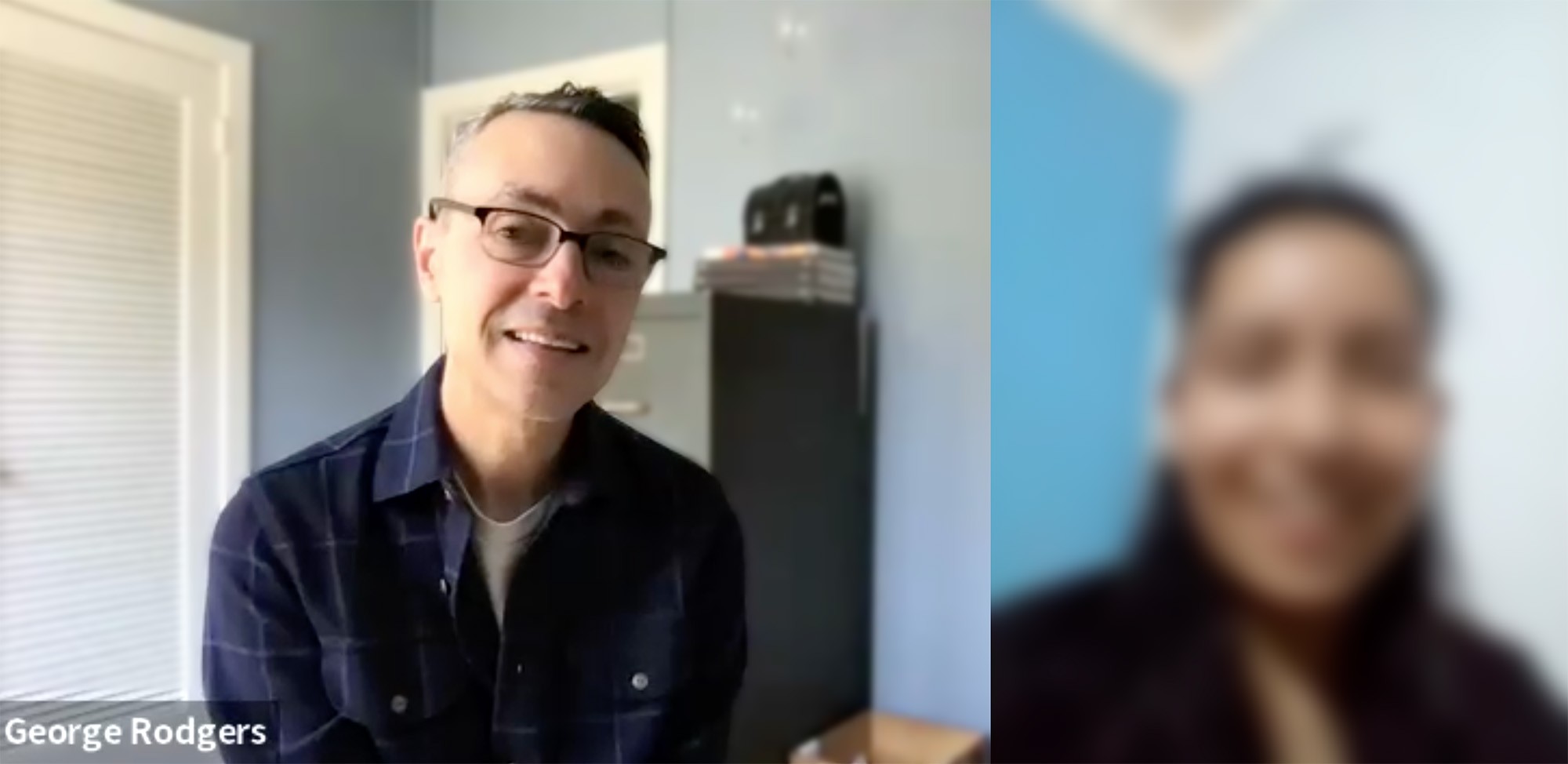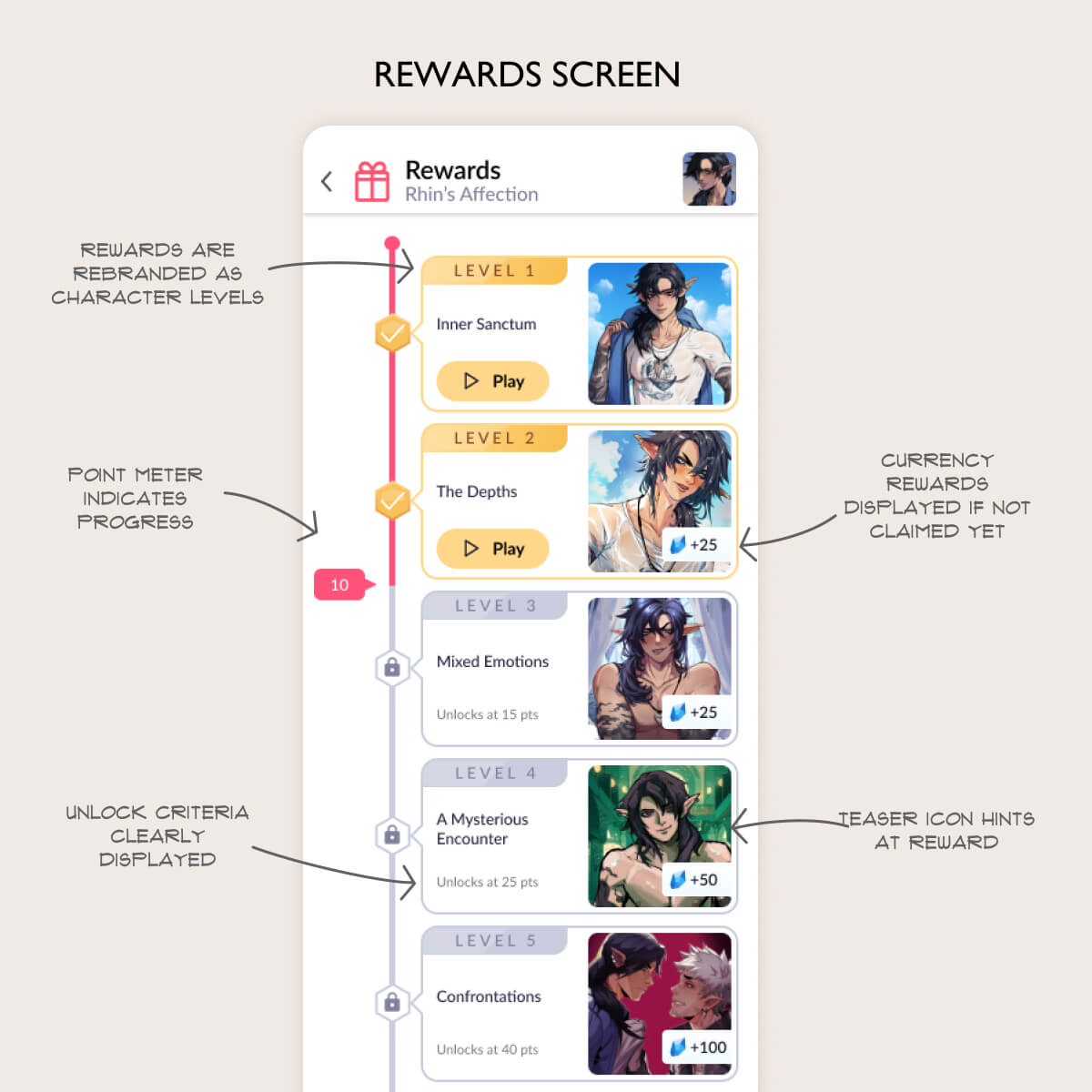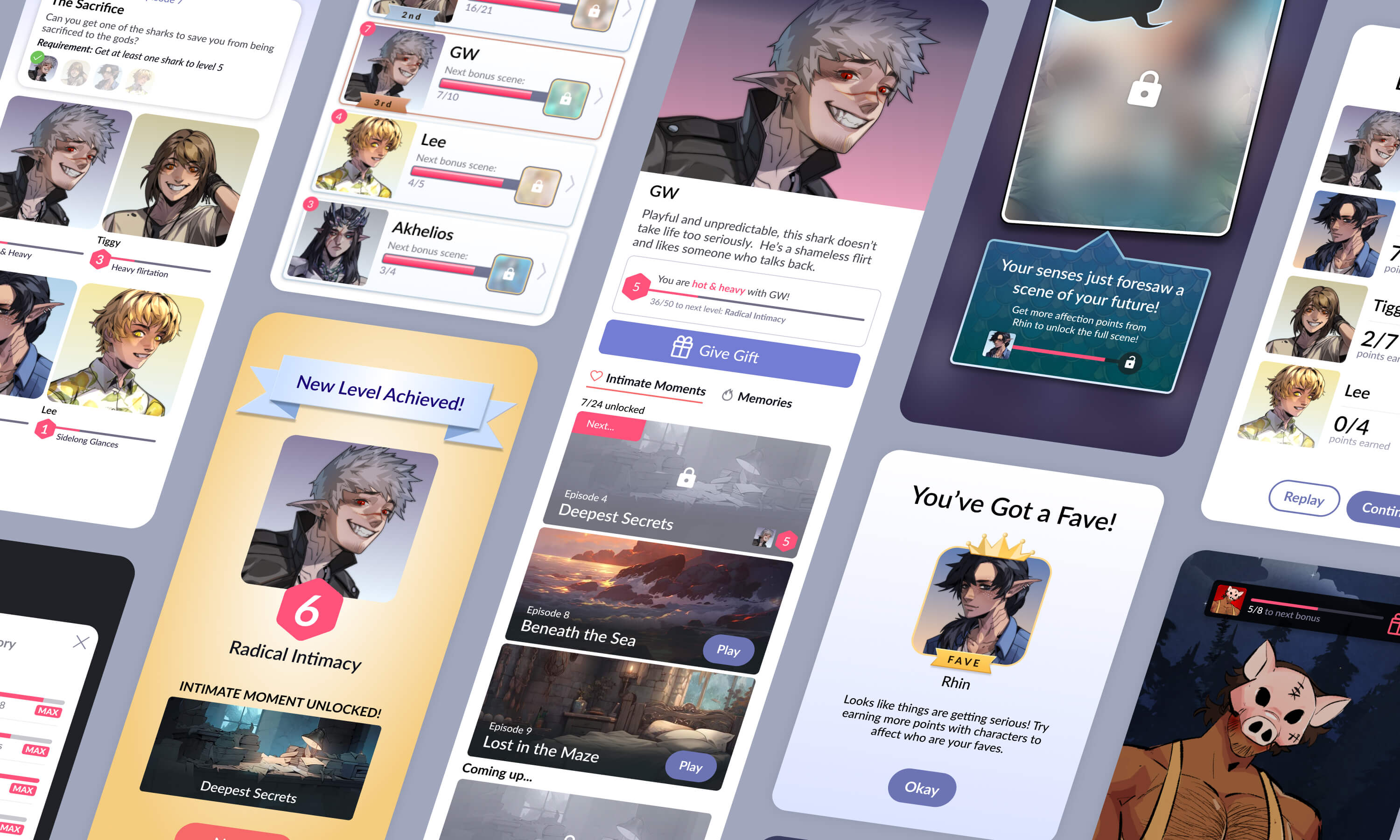CASE STUDY: DORIAN
Creating a goal system to drive deeper fan engagement with UGC games
ROLE
Director of Product Design
TOOLS
Figma
As a UGC narrative fiction platform, Dorian is really two products - a game app and also a creator tool that let’s anyone create and publish their own games on our platform. So when we set out to create a goal system, we needed to think through the problem from both the perspective of the game creators, who would author new goals in the creator tool, and the fans, who would engage with the goals in the app.
In my role as Director of Product Design, I drove the new feature through all stages of the development process.
THE OPPORTUNITY
I frequently interview our users to learn more about experience with our app and creator tools. Many of the games on the Dorian platform are dating sims, and a common player request in interviews was the desire to track their progress building relationships with game characters. The data also backed up that fans who engaged with characters in this way showed deeper engagement. From this, we saw an opportunity to deepen fan retention and engagement by creating a goal system that any creator could add to their games.

Interviewing one of our users
MY PROCESS
I like to start by gathering all requirements for a design, both from a user perspective as well as company goals. It’s important to align on key KPIs with the core team before starting design to ensure we know in advance how to measure success.
Fan goals:
Be able to see the progress I’m making in my character relationships per game.
Have an easily accessible way to see what rewards I can earn for each goal.
Business goals:
Increase D7 retention by XX%
Increase daily reengagement in same game by XX%
With clear project goals established, it’s time to dive into design. A typical process looks something like this.
01/
Research and Ideation
I start by talking to users to better understand their needs, as well as soliciting internal requirements from the team. I’ll also research market best practices to evaluate possible solutions. In this case, exploring what works and doesn’t work about other goal systems in other games and apps - and what could be applicable to our use case.
02/
Flow Mapping
I then map out the flow of the user’s journey. I like to think through what I would want the user to feel at each step of the process to make sure it maps back to the user goals. Sometimes I’ll build simple tap-through prototypes in this stage to test if the flow feels intuitive.
03/
Wireframes and Prototype
Instead of true wireframes, at this stage I like to move directly into high-fidelity mocks and an interactive prototype. Figma makes it fast, and I find it helps the team to better envision the final end product. I’ll iterate heavily with input from the team, and from a select group of end users when possible.
04/
Implementation and Growth
Once design is locked, I write full specs - fleshing out full details and screen states. I work closely with engineering and QA to address questions and issues and oversee successful and smooth release. I also coordinate with analytics team to make sure we have all required tracking needs for core KPIs. Upon release, I monitor performance and determine next steps to enhance design.


RESULTS & NEXT STEPS
We released an MVP of the feature and saw over 20% increased D7 retention on the games that were utilizing the new system. This gave us the confidence to expand the feature with several new enhancements and sub-features.
Play tests, event tracking, and additional interviews gave us the data we needed to identify areas of improvement in the UX. The result was significantly increased retention and engagement on games using the new system.





About
DORIAN
Creating a goal system to drive deeper fan engagement with UGC games
ROLE
Director of Product Design
TOOLS
Figma
As a UGC narrative fiction platform, Dorian is really two products - a game app and also a creator tool that let’s anyone create and publish their own games on our platform. So when we set out to create a goal system, we needed to think through the problem from both the perspective of the game creators, who would author new goals in the creator tool, and the fans, who would engage with the goals in the app. I drove the new feature through all stages of the development process.
THE OPPORTUNITY
I frequently interview our users to learn more about experience with our app and creator tools. Many of the games on the Dorian platform are dating sims, and a common player request in interviews was the desire to track their progress building relationships with game characters. The data also backed up that fans who engaged with characters in this way showed deeper engagement. From this, we saw an opportunity to deepen fan retention and engagement by creating a goal system that any creator could add to their games.

Interviewing one of our users
MY PROCESS
I like to start by gathering all requirements for a design, both from a user perspective as well as company goals. It’s important to align on key KPIs with the core team before starting design to ensure we know in advance how to measure success.
Fan goals:
Be able to see the progress I’m making in my character relationships per game.
Have an easily accessible way to see what rewards I can earn for each goal.
Business goals:
Increase D7 retention by XX%
Increase daily reengagement in same game by XX%
With clear project goals established, it’s time to dive into design. A typical process looks something like this.
01/
Research and Ideation
I start by talking to users to better understand their needs, as well as soliciting internal requirements from the team. I’ll also research market best practices to evaluate possible solutions. In this case, exploring what works and doesn’t work about other goal systems in other games and apps - and what could be applicable to our use case.
02/
Flow Mapping
I then map out the flow of the user’s journey. I like to think through what I would want the user to feel at each step of the process to make sure it maps back to the user goals. Sometimes I’ll build simple tap-through prototypes in this stage to test if the flow feels intuitive.
03/
Wireframes and Prototype
Instead of true wireframes, at this stage I like to move directly into high-fidelity mocks and an interactive prototype. Figma makes it fast, and I find it helps the team to better envision the final end product. I’ll iterate heavily with input from the team, and from a select group of end users when possible.
04/
Implementation and Growth
Once design is locked, I write full specs - fleshing out full details and screen states. I work closely with engineering and QA to address questions and issues and oversee successful and smooth release. I also coordinate with analytics team to make sure we have all required tracking needs for core KPIs. Upon release, I monitor performance and determine next steps to enhance design.


RESULTS & NEXT STEPS
We released an MVP of the feature and saw over 20% increased D7 retention on the games that were utilizing the new system. This gave us the confidence to expand the feature with several new enhancements and sub-features.
Play tests, event tracking, and additional interviews gave us the data we needed to identify areas of improvement in the UX. The result was significantly increased retention and engagement on games using the new system.





George Rodgers
About
DORIAN
Creating a goal system to drive deeper fan engagement with UGC games
ROLE
Director of Product Design
TOOLS
Figma
As a UGC narrative fiction platform, Dorian is really two products - a game app and also a creator tool that let’s anyone create and publish their own games on our platform. So when we set out to create a goal system, we needed to think through the problem from both the perspective of the game creators, who would author new goals in the creator tool, and the fans, who would engage with the goals in the app. I drove the new feature through all stages of the development process.
THE OPPORTUNITY
I frequently interview our users to learn more about experience with our app and creator tools. Many of the games on the Dorian platform are dating sims, and a common player request in interviews was the desire to track their progress building relationships with game characters. The data also backed up that fans who engaged with characters in this way showed deeper engagement. From this, we saw an opportunity to deepen fan retention and engagement by creating a goal system that any creator could add to their games.

Interviewing one of our users
MY PROCESS
I like to start by gathering all requirements for a design, both from a user perspective as well as company goals. It’s important to align on key KPIs with the core team before starting design to ensure we know in advance how to measure success.
Fan goals:
Be able to see the progress I’m making in my character relationships per game.
Have an easily accessible way to see what rewards I can earn for each goal.
Business goals:
Increase D7 retention by XX%
Increase daily reengagement in same game by XX%
With clear project goals established, it’s time to dive into design. A typical process looks something like this.
01/
Research and Ideation
Once I understand the user’s motivations, I’ll start brainstorming ideas. Sometimes this means leading a team exercise to get a lot of ideas out fast. Then I’ll refine the best of those ideas into rough mocks or wireframes, reviewing and iterating with the team until we get something that feels right. I’ll also research market best practices and competitors to see what works and doesn’t work in similar products.
02/
Flow Mapping
I then map out the flow of the user’s journey. I like to think through what I would want the user to feel at each step of the process to make sure it maps back to the user goals. Sometimes I’ll build simple tap-through prototypes in this stage to test if the flow feels intuitive.
03/
Wireframes and Prototype
Instead of true wireframes, at this stage I like to move directly into high-fidelity mocks and an interactive prototype. Figma makes it fast, and I find it helps the team to better envision the final end product. I’ll iterate heavily with input from the team, and from a select group of end users when possible.
04/
Implementation and Growth
Once design is locked, I write full specs - fleshing out full details and screen states. I work closely with engineering and QA to address questions and issues and oversee successful and smooth release. I also coordinate with analytics team to make sure we have all required tracking needs for core KPIs. Upon release, I monitor performance and determine next steps to enhance design.


RESULTS & NEXT STEPS
We released an MVP of the feature and saw over 20% increased D7 retention on the games that were utilizing the new system. This gave us the confidence to expand the feature with several new enhancements and sub-features.
Play tests, event tracking, and additional interviews gave us the data we needed to identify areas of improvement in the UX. The result was significantly increased retention and engagement on games using the new system.





George Rodgers
About